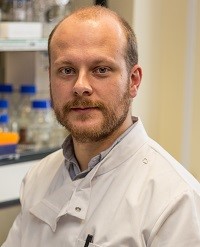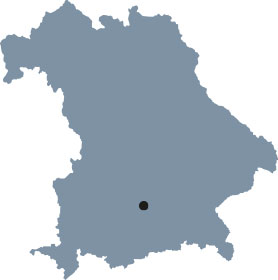Deciphering the molecular mechanisms of temperature and pain sensing by TRP channels
The ability to perceive temperature is crucial for experiencing pain and plays a fundamental role in our sensory world. Certain members of the transient receptor potential (TRP) channel superfamily act as direct thermo-sensors and pain receptors, opening prospects as targets for addiction-free pain therapy. The molecular mechanisms through which thermoTRPs detect temperature changes remain unknown. We will decipher the molecular mechanisms of TRP-invoked nociception, pain, and thermal sensation.
| Place of research | Ludwig-Maximilans-Universität München |
| Association | Elite Graduate Program "Human Biology" |
| Project duration | 2024 to 2030 |
| Group leader | Prof. Dr. Arthur Neuberger Contact the group leader |
| Further information | Website Deciphering the molecular mechanisms of temperature and pain sensing by transient receptor potential channels |
How do thermoTRPs sense temperature?
The Junior Research Group "Deciphering the molecular mechanisms of temperature and pain sensing by transient receptor potential channels" will develop innovative methods in membrane protein biochemistry and cryo-electron microscopy (cryo-EM) as a structural biology tool to decipher the enigmatic molecular mechanisms of TRP channel-invoked sensing of pain and temperature.
Cryo-EM has evolved as a powerful tool to gain near-atomic resolution insights into the molecular architecture of membrane proteins such as TRP channels. Under the right biochemical/biophysical conditions, cryo-EM can resolve multiple states of the protein thus fostering our understanding of the molecular mechanism of medicines or environmental stimuli such as temperature on these channels.
The Junior Research Group "Deciphering the molecular mechanisms of temperature and pain sensing by transient receptor potential channels" distinguishes itself from other doctorate programs by its aim to push the current boundaries of cryo-EM rather than ‘simply’ applying existing methodologies to answer an interesting and highly challenging biological question that revolves at the very center of the human sensory world.


The doctoral candidates in this research group will be trained to succeed in scientifically demanding future career paths, both in academia and industry. Whoever unravels this molecular mechanism will leave a lasting scientific mark.
Prof. Dr. Arthur Neuberger
The Junior Research Group cooperates with the Elite Graduate Program "Human Biology" at Ludwig-Maximilians-Universität München.


